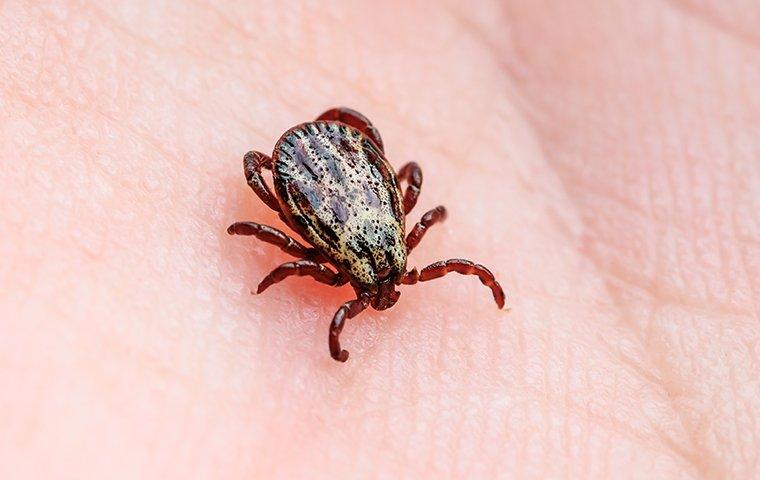 There are hundreds of tick species worldwide, but not all bite humans or spread disease. Some have hard shells, and some soft shells. They live and thrive in different climates worldwide.
There are hundreds of tick species worldwide, but not all bite humans or spread disease. Some have hard shells, and some soft shells. They live and thrive in different climates worldwide.
Ticks Common To The Area
The three most common to the Hudson Valley area are:
- Black legged tick (also known as a deer tick) - This tick has a reddish-orange body, and black shield. This tick will search for a host anytime temperatures are above freezing. They are known to spread Borrelia burgdorferi (Lyme disease), ehrlichiosis, anaplasmosis, and babesiosis.
- Lone star tick - This tick is reddish-brown, and the female is distinguished by a white dot (or lone star) on her shield. The greatest risk of being bitten is early spring, to late fall. They are known to spread tularemia, ehrlichiosis, Heartland virus, Bourbon virus, and STARI.
- American dog tick - This tick has a dark brown body. The females have a whitish color on their shields. The highest risk of being bitten is by the female in the spring or summer months. They are known to spread Rocky Mountain spotted fever, and tularemia.
This listing is not exhaustive by any means, but it gives you an idea of how dangerous ticks can be.
Where Can I Encounter Ticks?
Ticks have a lazy but highly effective approach to finding hosts. They will hang out in high trafficked areas, such as a path or trail, then when a potential host walks by they latch on. This is called “questing.” Some tick species are more aggressive, they seem to enjoy the hunt for a new host. Here is a list of the most common tick hangouts:
- High grassy areas.
- Stone walls.
- Leaf piles and litter.
- Wooded areas.
- Fallen and low-hanging branches.
- Overgrown shrubs.
- Wood piles, which are usually homes to mice.
No matter the species, staying tick-free is the goal. Before you return to your home, shake out clothing, and check backpacks for any hitchhikers. Once inside, take a shower, and do a check of your body for ticks that have latched on.
How To Deter Ticks
There are many methods and ‘hacks’ for lowering the tick populations, some work, and the others? Not so much. Have you tried any of these?
- Natural repellents that help keep the ticks at bay are: lemon, orange, cinnamon, lavender, peppermint, rose geranium, cedar oil, and apple cider vinegar.
- You can employ chickens to eat the ticks.
- Cut all tall grasses and shrubbery on and around the property.
- Keep a three-foot-wide barrier of gravel or wood chips between lawns and wooded areas, this will impede migration.
- Over-the-counter pesticides are abundant in more hardware stores and garden centers.
- Tick-tubes are an interesting and brilliant idea designed to kill the seed tick. This product is designed to work using mice to aid in the process. However, the ticks carried by squirrels, gophers, and moles are still active on the property.
- Wear a lightweight long sleeve top, and tuck your pants into your socks. It is also highly suggested that you pretreat your clothing with permethrin. It can be used to treat boots, clothing, and camping gear, and remains protective through several washings.
- Use EPA-approved products containing DEET, picaridin, IR3535, oil of lemon eucalyptus, or para-menthane-diol.
The Pros Can Help
The best way to control tick populations around your Hudson Valley property is with professional assistance. Pestmaster® Services offers tick elimination solutions that will give you the peace of mind you need, so you can enjoy your little piece of the outdoors. Call for a free consultation today.
.png)
